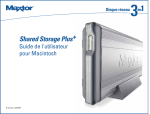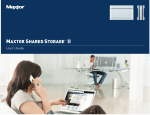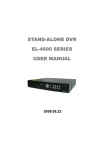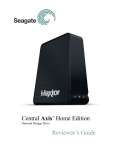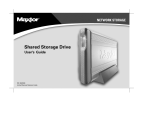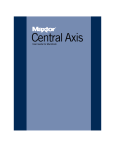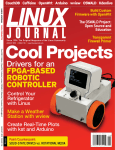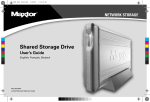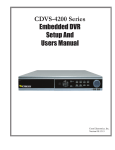Download Maxtor Shared Storage Plus+ User`s guide
Transcript
3 1 in Network Drive Shared Storage Plus+ Macintosh User’s Guide PN: 20297501 Contents 1 Introduction . . . . . . . . . . . . . . . . . . . . . . . . . . . . . . . . . . . . . . . . . . . . . . . . . . . . . . . . . 1 Shared Storage Plus Features . . . . . . . . . . . . . . . . . . . . . . . . . . . . . . . . . . . . . . . . . . . . . 1 Shared Storage Plus Components . . . . . . . . . . . . . . . . . . . . . . . . . . . . . . . . . . . . . . . . . . 1 Included in this Kit . . . . . . . . . . . . . . . . . . . . . . . . . . . . . . . . . . . . . . . . . . . . . . . . . . . . . . 1 Minimum System Requirements . . . . . . . . . . . . . . . . . . . . . . . . . . . . . . . . . . . . . . . . . . . 2 Handling Precautions . . . . . . . . . . . . . . . . . . . . . . . . . . . . . . . . . . . . . . . . . . . . . . . . . . . . 2 About this Guide. . . . . . . . . . . . . . . . . . . . . . . . . . . . . . . . . . . . . . . . . . . . . . . . . . . . . . . . 2 Where to Go for Help . . . . . . . . . . . . . . . . . . . . . . . . . . . . . . . . . . . . . . . . . . . . . . . . . . . . 2 2 Installing the Shared Storage. . . . . . . . . . . . . . . . . . . . . . . . . . . . . . . . . . . . . . . 3 Connect Your Drive . . . . . . . . . . . . . . . . . . . . . . . . . . . . . . . . . . . . . . . . . . . . . . . . . . . . . 3 Power up Your Drive . . . . . . . . . . . . . . . . . . . . . . . . . . . . . . . . . . . . . . . . . . . . . . . . . . . . 3 Set up Your Drive . . . . . . . . . . . . . . . . . . . . . . . . . . . . . . . . . . . . . . . . . . . . . . . . . . . . . . . 4 3 Using the Shared Storage .......................................... 9 Using the Drive . . . . . . . . . . . . . . . . . . . . . . . . . . . . . . . . . . . . . . . . . . . . . . . . . . . . . . . . 9 Drag and Sort . . . . . . . . . . . . . . . . . . . . . . . . . . . . . . . . . . . . . . . . . . . . . . . . . . . . . . . . . 23 Backup . . . . . . . . . . . . . . . . . . . . . . . . . . . . . . . . . . . . . . . . . . . . . . . . . . . . . . . . . . . . . . 26 Advanced Settings . . . . . . . . . . . . . . . . . . . . . . . . . . . . . . . . . . . . . . . . . . . . . . . . . . . . . 33 Using Media Server . . . . . . . . . . . . . . . . . . . . . . . . . . . . . . . . . . . . . . . . . . . . . . . . . . . . 41 Shutting Down Your Drive . . . . . . . . . . . . . . . . . . . . . . . . . . . . . . . . . . . . . . . . . . . . . . . 42 Resetting Your Drive . . . . . . . . . . . . . . . . . . . . . . . . . . . . . . . . . . . . . . . . . . . . . . . . . . . 42 Media Serving. . . . . . . . . . . . . . . . . . . . . . . . . . . . . . . . . . . . . . . . . . . . . . . . . . . . . . . . . 42 1 Introduction Thank you for selecting the Maxtor Shared Storage Plus drive. Connecting this storage solution to your network in a home or small office is a simple and economical way for users to share and backup files. Your new Maxtor Shared Storage Plus drive offers a winning combination of capacity, simplicity of use and helpful software features that automate configuration, privacy and more. The simple installation allows you to start using your drive as quickly as possible. You can also change settings on your drive at any time, and manage user access through Safari or other web browsers. Shared Storage Plus Features Instantly add storage to your network, back up files across every compatible Macintosh on your network, and stream music, videos and photos from your drive to your home entertainment system. Shared Storage Plus Components Review the features shown before you begin installation. Back Front Power Button Power Reset USB Ports Connector Button Network ID Panel Security Ethernet port Locking Slot Status Light (Flashing Green and Amber Lights) Figure 1. Shared Storage Plus Drive Features Simple Installation and Setup • Automatically configure the drive to your network Included in this Kit • Manage the drive using our simple user interface • Connect and share additional hard drives using the drive’s 2 USB ports The Shared Storage Plus drive comes complete with the components shown in Figure 2. Instant Shared Storage • Easily store and share access to files, photos, music and videos • Organize files automatically using Drag and Sort™ • Give users full access to public folders, while keeping others private Vertical Stand Quick Start CD Shared Storage Plus Drive Back up what Matters Most • Protect data on all of your networked Macs using Maxtor® Backup • Get backup and storage status for all users with SimpleView™ Playback of Videos, Music and Photos • Use our media streaming feature to play digital photos, music and video on a networked home entertainment system - even without turning on your Macintosh Power Adapter Cat5 Ethernet Cable Figure 2. Included in this Kit • Connect automatically through a UPnP™ AV compatible digital media adapter Introduction 1 Minimum System Requirements About this Guide The following are the minimum system requirements. The following symbols and conventions are used in this guide: • • • • OS X 10.2.8 or later 128 MB RAM or more as required by operating system Safari 1.0.3 or later for management interface of Shared Storage Plus Wired or wireless router with available 10BaseT or faster Ethernet port • Internet access or updates • Networked Media Adapter • CD-ROM drive Note: Special considerations for immediate media file access are required. See Media Serving for more information. Handling Precautions Handle your drive with care! Follow the precautions listed here or you could damage your drive and void your warranty. Review the Maxtor Limited Warranty, included in the Maxtor Shared Storage Plus Quick Start Guide, for more information. The following precautions can prevent loss of data: • Do not bump, jar, drop or move the drive while in operation. • Do not stack drives. • Do not set the drive on its side without using the vertical stand as it could fall over and cause damage. • Do not remove any cables or power cords without powering down the drive, using the front panel button. • Do not set any liquids or drinks on the drive. Liquids will damage the internal electronics. • Do not attempt to open the drive’s case. This will void your warranty. 2 Bold Used for menu, command, and keyboard selections you make and screens you will see. Helpful information about a particular topic. Important information to prevent problems and ensure that you are successful in using the drive. Where to Go for Help Maxtor provides a comprehensive support section on its website, including the latest software, user guides and a knowledge base for its customers. Maxtor Support Website http://support.maxtor.com/sharedstorage Maxtor has provided Shared Storage – Troubleshooting and FAQ Portal from within its Knowledge Base providing you with one link from which you can obtain answers to common questions and problems. Support Phone Numbers Check the Contact Us section on the Maxtor support website, for phone numbers in your region. 2 Installing the Shared Storage Step 1 - Connect Your Drive Step 2 - Power up Your Drive Connecting the Ethernet Cable Press the button on the front of your Maxtor Shared Storage Plus drive. 1. Plug one end of the Ethernet cable into your network, router or switch. Your drive will now start. The startup process can take up to one minute to complete. 2. Plug the other end of the Ethernet cable into the Ethernet port on your Shared Storage Plus drive. • The light inside of the button will turn amber. • When the light pulses green, your drive is ready and you can go to Step 3. Your drive will be accessible on your network approximately 10 seconds after the light turns green. Router/Switch Ethernet Ports Figure 3. Connecting the Ethernet Cable Connecting the Power 1. Plug the round female connector from the power adapter into the drive’s power connector. Power Button Figure 5. Pressing the Power Button 2. Plug the female connector on the power cord into the power adapter. 3. Plug the standard electrical plug from the power adapter into your power source. Figure 4. Connecting the Power Installing the Shared Storage 3 Step 3 - Set up Your Drive 4. Review the License Agreement and click Continue. 1. Insert the Maxtor Quick Start CD and double-click the Install CD icon. 2. Then double-click the Quick Start.pkg icon to launch the program. 3. From the Welcome screen, click Continue. 5. To accept the terms of the License Agreement, click Agree. 4 6. Select a destination to install the Quick Start software …and click Continue. 7. To start the installation, click Install. 8. When prompted, type your Name and Password of the user to authenticate. Click OK to proceed. 9. A restart is required to complete the installation. Click Continue Installation to proceed. Installing the Shared Storage 5 10. The Quick Start software will install on your computer. 12. When the computer is ready, double-click the Quick Start icon. 13. The Quick Start software will begin locating Shared Storage Drives detected on the network. 11. When finished, click Restart. 14. When found, you will see the Network ID number and IP address for the located drive(s). For example: MSS-0170CA (192.169.1.108). 6 15. The Quick Start - Shared Storage Administrator Password window will appear for all new drives, allowing you to set administrative security on the Shared Storage drive. 18. Quick Start opens the web browser and displays the Quick and easy setup (Step 2 of 2). Click Yes to launch the Web User Interface and set an administrative password. Note: Skip to Step 18 if No is selected. 16. The Quick Start software will then connect to and open the web browser and displays the Quick and easy setup (Step 1 of 2). Optional: • Enter a Computer Name • Enter a Workgroup Name Type and re-type the Administrator Password. Click Next to continue. 19. When prompted, type the Name and Password to authenticate, 17. Click the pop-up menu to select the language. Click the Date/Time radio buttons to change settings as needed. If necessary, enter the date and time, adjust the AM/PM radio buttons and click Next. then click Login. Installing the Shared Storage 7 20. When authenticated, the Congratulations window is displayed. Print or write down the information for future reference. 21. Click OK to return to the Maxtor Shared Storage Plus – Home Page. 22. Close the browser to return to the Quick Start menu. 8 3 Using the Shared Storage Using Quick Start with your Maxtor Shared Storage Drive 4. Click Select Drive. Select Your Drive Make sure your Shared Storage Drive is connected to your network and turned on. Its name and IP address will appear in the “Select a Maxtor Shared Storage Drive” list. 1. Double-click the Maxtor Quick Start icon located on your Desktop. 2. Click the name of your Shared Storage Drive in the list. 3. Select a user account. Using the Shared Storage 9 5. If it is a private account, enter the password and click OK. Maxtor Quick Start Help Help can be accessed from: • The Help Button located on the Quick Start Main Menu. • The Help Menu located at the top of the desktop. When selecting one of these options, the Help Menu is displayed. A shortcut to the shared folder for this user account will appear on the desktop of your Macintosh. Note: If you are already connected to an account and want to connect to another account on your Shared Storage Drive, you do not need to select the drive (step 3, above). If you are setting up your Shared Storage Drive for the first time, you will need to create a user account. Create and Use Shared Folders User Account Types Public With a public account, all of your files are accessible to anyone who has an account on your Shared Storage Drive. Private With a private account, all of your files are password-protected except for those which you place in your “Public” folder to share with others. 10 Name and Password Business Folders Table 2: Length Name may be up to 20 characters in length. Password may be up to 32 characters in length. Characters Both may contain letters, numbers, and underscores (_), but no spaces or symbols. Home Folders Appropriate for My Backup Backed-up files My Documents Word processing files My Projects Project files Creating Shared Folders My Spreadsheets Spreadsheet files Shared Folder Types Home My Presentations Business presentations My Photos Digital photos and artwork With this folder type, a series of sub-folders are created that help with organizing files/folders commonly used in the Home environment (My Music, My Documents, etc.). A shortcut to the Public folder is provided as well. My Sites Web pages My Software Software storage Public Sharing files with others Home Folders None Table 1: Home Folders Appropriate for My Backup Backed-up files My Documents Word processing files My Library Electronic books My Movies Home videos My Music Digital music collection My Photos Digital photos and artwork My Sites Web pages My Software Software storage Public Sharing files with others With this folder type, no sub-folders are created; however, there is a shortcut to the Public folder. Note: The Public account, for all users, contains a set of folders identical to the Home folders shown above, but using the name “Our.” For example: “Our Music.” Using the Shared Storage 11 Creating a Public/Home User Account 4. Type a Name for your shared folder. 1. From the main Quick Start screen, click the Create a User Account button at the lower left of the Quick start menu. 5. Click Create. At this point, the account is created (this may take a few minutes to complete). 2. Select the Public User Account type. 3. Select the Home Folder type. 12 6. When created, the word “Success” will appear near the help button… Creating a Public/Business User Account 1. From the main Quick Start screen, click the Create a User Account button at the lower left of the Quick start menu. …and a shortcut to the shared folder for this user account will appear on the desktop. 2. Select the Public User Account type. Double-click the shortcut to view its contents. 3. Select the Business Folder type. Using the Shared Storage 13 4. Type a Name for your shared folder. When created, the word “Success” will appear near the help button… 5. Click Create. At this point, the account is created (this may take a few minutes to complete). …and a shortcut to the shared folder for this user account will appear on the desktop. Double-click the shortcut to view its contents. 14 Creating a Public/None User Account 4. Type a Name for your shared folder. 1. From the main Quick Start screen, click the Create a User Account button at the lower left of the Quick start menu. 5. Click Create. At this point, the account is created (this may take a few minutes to complete). 6. When created, the word “Success” will appear near the help button… 2. Select the Public User Account type. …and a shortcut to the shared folder for this user account will appear on the desktop. 3. Select the None Folder type. Using the Shared Storage 15 Double-click the shortcut to view its contents. 2. Select the Private User Account type. Creating a Private/Home User Account 1. From the main Quick Start screen, click the Create a User Account button at the lower left of the Quick start menu. 3. Select the Home Folder type. 4. Type a Name for your shared folder. 5. Type and re-type a Password. 16 6. Click Create. At this point, the account is created (this may take a few minutes to complete). Double-click the shortcut to view its contents. Creating a Private/Business User Account 7. When created, the word “Success” will appear near the help button… 1. From the main Quick Start screen, click the Create a User Account button at the lower left of the Quick start menu. …and a shortcut to the shared folder for this user account will appear on the desktop. Using the Shared Storage 17 2. Select the Private User Account type. 6. Click Create. At this point, the account is created (this may take a few minutes to complete). 3. Select the Business Folder type. 4. Type a Name for your shared folder. 5. Type and re-type a Password. 18 7. When created, the word “Success” will appear near the help button… …and a shortcut to the shared folder for this user account will appear on the desktop. Double-click the shortcut to view its contents. 2. Select the Private User Account type. Creating a Private/None User Account 1. From the main Quick Start screen, click the Create a User Account button at the lower left of the Quick start menu. 3. Select the None Folder type. 4. Type a Name for your shared folder. 5. Type and re-type a Password. Using the Shared Storage 19 6. Click Create. At this point, the account is created (this may take a few minutes to complete). Double-click the shortcut to view its contents. Using Shared Folders to Connect to User Accounts There are two (2) methods for connecting to User Accounts. This section provides you with the steps for connecting a Public or Private User: 7. When created, the word “Success” will appear near the help button… …and a shortcut to the shared folder for this user account will appear on the desktop. 20 Method 1 – Connect a Public User Account 1. From the main Quick Start screen, click the Connect to a User Account button at the lower left of the Quick Start main menu. The Connect to User Account windows is displayed. 4. When connected the word “Success” will appear near the help button… 2. Select the Public User Account that you wish to connect. …and a shortcut to the shared folder for this user account will appear on the desktop. Method 2 – Connect a Private User Account 1. From the main Quick Start screen, click the Connect to a User Account button at the lower left of the Quick Start main menu. 3. Click Connect. At this point the Quick Start software connects to the user account. Using the Shared Storage 21 The Connect to User Account windows is displayed. 4. Click Connect. At this point, the Quick Start software connects to the user account. 2. Select the Private User Account that you wish to connect. 5. When connected the word “Success” will appear near the help button… 3. Type the Password. …and a shortcut to the shared folder for this user account will appear on the desktop of your Macintosh. 22 Drag and Sort™ Note: Drag and Sort can also be enabled and/or disabled from the Settings Drag and Sort menu. What is Drag and Sort? Drag and sort is an easy and powerful way to sort files on your Shared Storage Drive. When you drag a group of files to the Shared Storage Drive icon, each file is automatically sorted into a specific folder, based on its file type. Enable Drag and Sort This turns Drag and Sort on or off. It is turned on by default when you install the Shared Storage Drive software. You may also control this setting using the Drag and Sort button in the main Quick Start screen. Using the Shared Storage 23 Folders and their Sorted File Types “Our” Public Folders and their Sorted File Types Two types of folder sets exist on your Shared Storage Drive: • “My” folders - a set of folders unique to each user. Table 4: Folders File Types (by extension) Our Documents asc, bak, csv, doc, dot, dwg, dxf, eml, maq, mar, mdb, mpp, msg, pdf, pm3, pm4, pm5, pm6, pot, pps, ppt, ps, pst, rtf, txt, wpd, wpt, wri, xtl Our Movies avi, moov, mov, movie, mpeg, mpg, qt, rm, wmv, swf, asf, rmvb, ogm, vob, ape • “Our” folders - a set of folders for all users. Files dragged to a user-specific shared folder are sorted into the “My” Personal Folders. Files dragged to the Public shared folder are sorted into the “Our” Public Folders. “My” Personal Folders and their Sorted File Types Table 3: Folders File Types (by extension) Our Music aiff, au, mid, midi, mp3, wav, wma, ogg, ram, ra, cda, mp1, mp2 My Documents asc, bak, csv, doc, dot, dwg, dxf, eml, maq, mar, mdb, mpp, msg, pdf, pm3, pm4, pm5, pm6, pot, pps, ppt, ps, pst, rtf, txt, wpd, wpt, wri, xtl Our Photos bmp, eps, ico jfif, jpeg, jpg, psd, raw, tif, tiff, wmf, msp, png, psp, pcx, ras, tga, wpg, img, gif, bm, psd My Movies avi, moov, mov, movie, mpeg, mpg, qt, rm, wmv, swf, asf, rmvb, ogm, vob, ape Our Sites html, htm, xsl, xml, asp, css, jsp, php, jar, cgi, php3, phtml, bin, asmx, js, pl, htmls My Music aiff, au, mid, midi, mp3, wav, wma, ogg, ram, ra, cda, mp1, mp2 Our Software exe, bat, iso, bin, reg, sys, tmp, cab, dll, jav, js, cue, rar, zip, ace, com, dat, ini, ocx, sql, swp, frm My Photos bmp, eps, ico jfif, jpeg, jpg, psd, raw, tif, tiff, wmf, msp, png, psp, pcx, ras, tga, wpg, img, gif, bm, psd My Presentations* ppt My Projects* mpp My Sites html, htm, xsl, xml, asp, css, jsp, php, jar, cgi, php3, phtml, bin, asmx, js, pl, htmls My Software exe, bat, iso, bin, reg, sys, tmp, cab, dll, jav, js, cue, rar, zip, ace, com, dat, ini, ocx, sql, swp, frm My Spreadsheets* xls, mdb * Business user account folders. 24 Adding Drag and Sort Folders Adding Drag and Sort File Types To add a new folder: To add a new file type: 1. Click the plus sign (+) at the bottom of the column. 1. Select the folder in which you want to store the new file type. A sheet will drop down where you can enter the new folder name. 2. Click the plus sign (+) at the bottom of the File Types column. A sheet will drop down where you can enter a new file type. 2. After clicking OK, the new folder will appear in the list in alphabetical order. Using the Shared Storage 25 3. After clicking OK, the new file type will appear in the list in alphabetical order. Backup Backup Settings To Launch Backup 1. From the Quick Start menu, click Settings. Note: To add a file type, you need to know its extension. For example: DOC for a text file. 2. This will launch the Quick Start Settings menu. By default, Backup is selected. If necessary, click the Backup tab. You will see the following: 26 Select Folders to Back Up 4. At this point, the backup will prepare. 1. Click the plus sign (+). 2. From the Finder window displayed, select a folder and click Open. Repeat steps 1 and 2 to add additional folders or select multiple folders in a list by holding down the command key while clicking each folder. Files will start backing up to the Shared Storage Drive. 3. To launch an immediate backup, click Back Up Now. Using the Shared Storage 27 5. When finished, a message displays notifying that you that the backup completed. Editing Backup Settings Set Day and Time 1. Choose a time for your backup by clicking the arrow buttons or typing. 28 2. Choose day(s) by clicking them. Enable Scheduled Backups This turns scheduled backups on or off. You may also control this setting using the Scheduled Backup button in the main Quick Start screen. Using the Shared Storage 29 Back Up Now Historical Versions After you've selected the folders to back up, the day and the time, you can back up your folders immediately by clicking Back Up Now. When you back up your files, you have the option to store previous, or “historical,” versions of each file. You can then restore any historical version based on the date when it was backed up. 1. Click the drop menu. 30 2. Choose the number of historical versions from the pop-up menu. Delete History This deletes all but the most current historical version of each backed-up file, creating extra space on your Shared Storage Drive. 1. Click Delete History. By default, 5 historical versions of each file are stored. The deletion begins. Using the Shared Storage 31 2. When finished, the message “Delete history” will be displayed. Delete Unused This deletes all backed-up files from your Shared Storage Drive that no longer exist on your Macintosh, creating extra space on your Shared Storage drive. 1. Click Delete Unused. The deletion begins. 32 2. When finished, the message “Delete Unused” has completed message is displayed. Advanced Settings To open, click Settings Advanced. The following options are displayed. Using the Shared Storage 33 Scheduled Backup Start my Macintosh if it is not running Note: These backup features are only available for Mac OS X 10.3 or later. Select this option to automatically start your Macintosh, so that backup can take place. Wake my Macintosh if it is asleep Select this option to automatically wake up your Macintosh, so that backup can take place. If you do not select this option, you will need to manually wake up your Macintosh before backup can start. This option is checked by default. This requires that the “automatically log in…” option is selected for your Mac OS X user account. If you currently log in manually and would like to switch to automatic login: 1. Go to the Apple Menu and choose System Preferences. 2. Click Accounts. 3. Click the lock at the bottom of the window. 4. Type your password and click OK. 5. Select your user account. 6. Click Login Options. 7. Click Automatically log in as. 8. Choose your user name from the drop-down list. 9. Type your password and click OK. 34 Shut down my Macintosh when backup is finished To launch the Web User Interface (UI) Select this option to automatically shut down your Macintosh when backup is finished. This feature is disabled if “Automatic Login” feature is disabled. From the Quick Start main menu, click Settings Advanced. 1. Click the Shared Storage Administration button. Connect to my selected User Account at login Select this option to make the shared folder for your currently selected user account automatically accessible from the desktop and the Finder every time you log in to your Macintosh. Note: Drag and Sort must be turned on for this feature to work. Shared Storage Administration From the Shared Storage Drive home page, you can do the following: • Create or modify user accounts and shared folders • Set or modify the language, date and time • Adjust network and power settings • View drive status • Set up shared USB devices • Perform diagnostics and run disk utilities 2. This will launch your browser. When prompted, type the User Name and Password to authenticate. Additional Web UI Informaton Please refer to page 34 of the Maxtor Shared Storage Plus Windows User’s Guide (separate Adobe PDF file titled “20297401_Windows.pdf” on the Maxtor Quick Start CD) for information about the Web User Interface. Using the Shared Storage 35 3. Click Login. Backup If configured through settings, you can launch a backup from Quick Start. 1. Click the Back Up button. 4. The browser then launches to the Maxtor Shared Storage Drive – home page. The backup prepares to launch. And then starts to backup the files to your Shared Storage Drive. 2. When finished, a screen notifies you that the Backup completed. Click the red button to close the screen. 36 Restore 2. Click the arrow next to the hard drive where the current files are stored to reveal the folders from which files or folders were backed up. Restore Recent Files and Folders You can restore the most recent version of backed-up files and folders. Select a File or Folder. 1. From the Quick Start Main Menu, click the Restore button. 3. Click the arrow next to each folder to reveal its contents until you find the specific files and/or folders you wish to restore. Using the Shared Storage 37 4. Click the checkbox next to the files and/or folders you wish to restore. Select a Restore Location Original: Restores file(s) to their original location, replacing the existing version. or To restore a historic version of a file, click the latest drop down menu and select the Historic file version that you wish to restore. 38 Temporary: Restores files to the temporary location in the Documents folder of the current user For example: /Users/John/Documents/Maxtor Restore. Historical Versions When you back up your files, you have the option to store previous, or “historical,” versions of each file. You can then restore any historical version based on the date when it was backed up. You can choose the number of historical versions from the Historical Versions pop-up menu in the Backup Settings window. By default, 5 historical versions of each file are stored. SimpleView™ Storage and Backup Status This screen provides you with an overview of each user's storage and backup information: Table 5: Last Backup Date of the user's latest backup Space Used Total size of all user's files Backup Status Success of user's last backup Click SimpleView. Restore the files and folders After you've selected the file(s) and the restore location, click Restore. Using the Shared Storage 39 Backup Log File The following displays: You can see the details of a user's backup by reading the log file. To view the log file, double-click the icon in the Status column. Backup Status Indicators The log files launches in a Console window. Table 6: Icon 40 Status Meaning Complete All files successfully backed up Incomplete Some files backed up Failed No files backed up Use Media Server to Manage your Digital Photo, Music and Video Collection 2. This will launch your browser. When prompted, type the user Name and Password to authenticate. If you have a networked home entertainment system, you can use Media Server to manage your digital photo, music and video collection on your Shared Storage Drive and use it with your entertainment system. Media Server can even search your iTunes Music folder for music and video files. Media Server recognizes files in the following folders on your Shared Storage Drive: Our Photos, Our Music, Our Movies, My Photos, My Music, My Movies or My Multimedia. By placing your files in these folders, they will automatically be available for use with your entertainment system. In order to use Media Server, your entertainment system will need to be compatible with UPnP (Universal Plug and Play). 3. Click Login. To enable Media Server on your Shared Storage Drive, click the Media Server button in the main Quick Start screen. To enable Media Server: 4. This will launch your browser directly to the Manage Digital Photos, Music, and Video page. 1. From the Quick Start main menu, click the Media Server button. Using the Shared Storage 41 Shutting down Your Drive Media Serving To safely shut down your Shared Storage Drive: With the Shared Storage Drive’s Media Serving capabilities, you can view videos or photos and listen to music on your home entertainment center without ever turning on your computer. The Media Server feature is disabled by default on the Shared Storage Drive. Press and hold the button on the front of your drive for 5 seconds. Press the button. Figure 6. Shutting down your drive The button light will change from green to amber, indicating that the drive is shutting down. When the light goes off, your drive is completely shut down. Resetting Your Drive If you can not access your drive after moving it to another network or turning it on after it has been off for a period of time, it may need to be reset. To reset your drive: • With the drive turned on, use a small pointed object, like the tip of a pen or paperclip, press and hold the reset button on the back of your drive until the button light turns amber, and then release. (See figure 7). • After a few seconds, the drive will reboot. • When the light changes to green, the reset is complete and your drive is ready for use. Once your Shared Storage Drive is properly connected to your network, you can copy music, movies, or videos directly to it. Next, connect an UPnP™ AV compatible digital media adapter (DMA) through your router, and your home network becomes a home entertainment center. Press and hold the reset button. Figure 7. Resetting your drive After you reset your Shared Storage Drive, its name will be will be reset to the original name when you installed it. (Example: MSS000335). In addition, the workgroup will be reset to MSHOME. 42 Considerations for home media networks Additional Web UI Information • Some data may not be available for access for up to two (2) hours after being copied to the Shared Storage Drive. To obtain immediate access to these media files, click the Refresh button located in Web UI. Please refer to page 34 of the Maxtor Shared Storage Plus Windows User’s Guide (separate Adobe PDF file titled “20297401_Windows.pdf” on the Maxtor Quick Start CD) for information about the Web User Interface. • Take a survey and note all of the wireless devices in your household (e.g., radio’s, stereo’s, speakers, phones, cell phones, microwave ovens, alarms, etc.). • Use of a hand held WiFi detector will help determine strength and weakness of WiFi signals in your home. • Be suspicious of any wireless devices in the same general area and remove them from the WiFi paths of your routers and media players. • In some cases, firewalls may need to be disabled and re-enabled. • Most wireless devices broadcast a wireless frequency by default. Check the documentation of your wireless media players for configuration (WEP) settings. • Check that your wireless router (WEP) security settings will allow detection and connection of new devices. • Try moving your media player within a couple of feet of your wireless router for configuration and connection. • When configuring and detecting wireless devices, keep an Ethernet cable handy to hard wire the devices together for diagnosis. • If you continue to have problems with your WiFi connection dropping off line, consider hardwiring the devices with Cat5e Ethernet cabling. • If you’re still having detection issues, reset all network devices by physically unplugging them from power. Power on all routers, switches, the Maxtor Shared Storage Plus, computers, and finally media players. Using the Shared Storage 43 Copyright © 2006 Maxtor Corporation. All rights reserved. Changes are periodically made to the information herein which will be incorporated in revised editions of this publication. Maxtor may make changes or improvements to the product(s) described in this publication at any time and without notice. Maxtor is a registered trademark of Maxtor Corporation. All other brands or products are trademarks or registered trademarks of their respective holders. Maxtor Corporation, 500 McCarthy Blvd., Milpitas, California 95035 USA. PN: 20297501















































